 Many Americans think there isn't a holiday like Halloween in Italy... but there is. On November 1st, Italians celebrate La Festa di Ognissanti, or All Saints’ Day. This is a national holiday when post offices, banks, and schools close, as well as being a Catholic holiday honoring all of the saints, martyrs and ancestors who have gone before. Italians will decorate and light up their cemeteries for Ognissanti, but in recent times they also carve pumpkins and even dress up for local festivals. A common tradition is to for a family to visit the cemetery after a special feast, to visit the members of family passed, leaving a tray of food for them to enjoy at their tomb. This visit leaves their home empty so that the dead could come back for a short visit, but without either the living or the dead disturbing each other. Families return to their homes and the dead return to their graves after church bells are tolled. Depending on the region of Italy, some burn bonfires and kids might do something like Trick or Treating from home to home (chanting "Morti, Morti") and receive treats. There are many variations throughout Italy, some even predating Halloween traditions. Many leave food out all night in case the dead want to come back home and feast while they sleep. Here are some Italian words to tide you over during this interesting holiday...  Una Strega - Witch Scopa - Broom Pipistrello - Bat Ragno - Spider Osso - Bone Cranio - Skull Grondone - Gargoyle Spaventoso - Scary Sinestro - Scary Diavolo - Devil Vampiro - Vampire Fantasma - Ghost Foletto - Goblin Mostro - Monster Lunu Mannaro - Werewolf Frankenstein - Frankenstein Zombie - Zombie Mummia - Mummy Casa Infestata - Haunted House Zucca - Pumpkin Jack-o-Lantern - Jack-o-Lantern Costume di Halloween - Halloween Costume Dolcetto o Scherzetto - Trick or Treat Morti - The Dead One of the more intriguing aspects of the Venice Carnevale is the beautifully fantastic cartapesta masks attendants wear. Many are colorful, feathery, glittered and elegant. But there is one long, bird-beaked mask that can creep out most who come across it... the Medico della Peste or Dottore Peste (plague doctor). This birdlike mask wasn't originally designed for the pleasures of Carnevale, but in fact was was invented in the 17th century by French physician Charles de Lorme to protect doctors airborne bacteria and viruses while treating victims of the plague. Carnival goers eventually started wearing a decorated version called Memento Mori, to remind them of their own mortality. In the 1600s, the beak was to be filled with aromatic and medicinal herbs to protect them from putrid air, which at that time was seen as the cause of infection. Often the city or town paid their fees, and some plague doctors were known to charge patients and their families (especially the wealthy) additional fees for special treatments for false cures. These so called "doctors" were often lay people without medical training, their only apparent useful purpose was in detailing and recording how many of the population were actually affected by plague. Even though these plague doctors offered little real healing, their value to the ruling class and local governments were overly inflated. In Florence and Perugia, doctors were often asked by officials to perform autopsies to help determine how the plague played a role. The city of Orvieto hired plague doctor Matteo fu Angelo in 1348 for four times the normal annual rate of a traditional doctor. Pope Clement VI hired several extra plague doctors during the Black Death to attend to stricken in Avignon. Of 18 doctors in Venice, only one was left by 1348: five had died of the plague, and 12 were missing and may have fled. Their special costume were first used in 1630 in Naples, and spread to be used throughout Europe. The spooky attire consisted of a light, waxed fabric overcoat, a mask with glass goggles and that frightening beak. They carried a scalpel for cutting open blisters (the goggles protected their eyes from the spatter) The wide brimmed hat identified most doctors during this time. Around their neck they wore a pomander which contained more herbs and aromatics--again, to protect themselves. They also kept and chewed raw garlic whenever near the inflicted. Their long cloak went nearly to the ground and was waxed heavily to ward off damp and fleas--possible carriers of the disease. They also carried a long cane to poke and probe patients during examinations and treatments, to avoid actually touching them. As mentioned earlier, that beak was stuffed with herbs, straw, and spices. The scented materials included juniper berry, ambergris, rose hips, mint, camphor, cloves, laudanum and myrrh.
Historic facts prove that these charlatans in their scary costumes did little to heal or prevent the plague in Italy. The Italian Plague of 1629–1631 was a series of outbreaks of bubonic plague which ravaged northern and central Italy. This epidemic claimed possibly one million lives, or about 25% of the population in these regions. Verona lost over 60% of its citizens. Milan lost 46%. In Venice, one third died. Stay healthy, amici. --Jerry Finzi  On the 6th of January every year, La Befana, the Italian witch, delivers treats to children across Italy, just as Babbo Natale does on Christmas Eve. But la Befana is a witch (albeit, a good one) who travels by broom, magically swishing down chimneys and leaving presents in children's pillow cases, stockings and shoes. In her hometown of Urbania--in the region of Marche--50,000 Italians celebrate this good witch's arrival with literally tons of desserts and foods. Throughout the streets and piazzas, you will find theater performances, fire-eaters, la Befana on stilts and also be amazed when she flies overhead (on a cable). The Festa Nazionale della Befana gives an alternative insight of holiday celebrations... it's perhaps one of the best festivals of the holiday season. --GVI Click on the photo above to watch a video of this festival
Most Italians take a two week vacation (called Ferragosto on August 15th) either before or after August 15th. Most large industries are closed during August and many museums and restaurants might also be closed. Many people take the entire month to rest and relax before returning to work and school on September 4th. The other period of time when holidays might affect normal business hours is the period between Christmas, New Year's Day and the Epiphany on January 6. Since Italy is a Catholic country, many national holidays coincide with religious holidays.
In addition, all Italian cities celebrate the patron saint as a legal holiday. All businesses are closed on...
 Procession in Itri, Lazio leading their way toward the bonfire Procession in Itri, Lazio leading their way toward the bonfire In Puglia, Basilicata, Lazio, Umbria, Lombardy and other regions of Italy, many towns and villages celebrate la Festa di San Giuseppe (March 19th) in a unique way... by lighting Fuochi nella Notte, fires of the night--or bonfires. The bonfires and festivities are on various days (depending on the town), from March 17th through the 19th. Known by different names, the bonfire festival might also contain the words Torciata (torch), Fiaccolata (torchlight procession), Falò (fire). For example, in Tuscany's Pitigliano, the event is called Torchiata di San Giuseppe with people dressed in medieval costumes and a procession of men and boys dressed in hooded monk's robes carrying flaming reed torches that will help build the bonfire. After the bonfire has burned down to ashes, tradition calls for people to collect and keep the ashes, ensuring their good luck in the coming spring. As with other holidays beginning in the New Year and throughout lent, the lighting of bonfires has a long history going back to the time of pagan worship. Through the last 2000 years, the activity has morphed into a Christian tradition. This tradition also coincides with the need to burn the trimmings from vines, olive trees and other woody crops. While Christians claim the fires are a representation of the good father, Saint Joseph, striving to keep the infant Jesus warm during winter nights, others say the tradition is from the ancient Romans celebrating the dark winter being overtaken by the light of spring. Many modern observers say it's just another way for fun-loving Italians to throw yet another party, for as with most festa and sagre, there is always the food, and a great sense of community.
And if the truth is to be told, Italians love bonfires so much, you will also come across other Fuochi on other saint day festivals across Italy. --GVI Today, March 8th, is International Women's Day and in Italy it's the time when mimosas are blossoming with their golden color. All across Italy women are presented lovingly with a bouquet of mimosa flowers to say "Thank you"... thank you for being Mama, that you for being my sister, thank you for being a great daughter, thank you for being a fantastic co-worker, or thank you for being a wonderful wife. March 8th is called La Festa delle Donne in Italy. While in Italy the day has become almost like Mother's Day here in the States, the observance started in 1909 by the Socialist Party of America, and was held in New York City after a sweat shop factory burned to the ground, killing 145 workers--mostly young women who were underpaid and had to work in unsafe conditions. This event and the observance was the de facto birth of the modern Women's Movement. Sadly, in Italy and around the world, women are still struggling to achieve equal pay for equal work, among many other issues. The tradition of a gift of mimosas dates back to 1946 when the feminists, Rita Montagnana and Teresa Mattei, came up with the idea of women offering the bouquets as a symbol of mutual respect, sisterhood and support. Mimosa was one of the few flowers in bloom on the date. The Mimosa also represents strength and endurance, being a tough plant that can survive adverse conditions in Italy. Oddly, being originally a Socialist observance, it seems that in Italy, the Festa delle Donne has been commercialized... another day where bouquets of Mimosa tied with yellow ribbons are sold in supermarkets, bars and tobacconists all over Italy. It's become expected that fathers, sons and husbands also give the flowers to the women in their lives. The commercialization of La Festa delle Donne has made it more like Mothers Day and might be losing some of its original meaning based on solidarity of women's issues. Even chocolate companies offer their dolci in yellow packaging. In some parts of Italy the Festa is celebrated on the closest Sunday to March 8th, and special events are held, such as a procession of mimosa decorated gondolas in Venice and a regatta for female rowers. . --GVI The commercialization of the Women's Movement in Italy From Grand Voyage Italy to all Women... Auguri!
Support each other and keep up the fight for equality!  When I was a kid, we would occasionally find a garter snake living in our small urban garden along with our collection of 15 box turtles. I always loved snakes... smooth, silky, muscular and graceful. On our country property today, I've often seen several species of snakes: garter, ribbon, black rat. The hill behind our home is called Rattlesnake Hill, but I've never seen one. I still find it interesting when I come across snakes... but I don't honor them in any way and couldn't dream of anyone holding a festival for them! 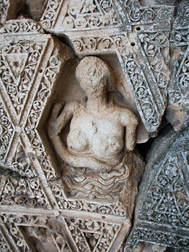 Ancient Roman temple to Angitia Ancient Roman temple to Angitia Yet, each year in the beginning of May, in the small towns of Cocullo and Villalag0, La Festa dei Serpari is held. The festival is held in honor of Saint Dominic, protector of toothache, reptile bites and rage. But the festival also has ancient pagan roots in honor of the Oscan healer and snake goddess, Angizia. Also known as Angitia to the ancient Romans, she was revered by the Marsi, a warlike tribe of people who lived to the east of Rome in the Apennine Mountains. 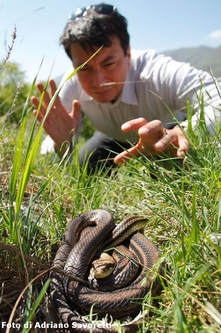 Separi reaching for his catch Separi reaching for his catch Angizia possessed an ability to heal those who had been poisoned--especially by snakes--and had the power to kill serpents by casting verbal spells. First century Romans knew the Marsi region contained many healers, magicians, and snake-charmers was infamous as a hotbed of witchcraft. The Festa dei Separi honors the modern-day separi (snake wranglers), with many of them catching and contributing snakes to the festivities. In preparation for the Festival, during the last half of March, the separi spread out across the countryside in their hunt for snakes. Once captured, they are carefully stored in wooden boxes, or as in ancient times, inside terracotta containers for 15-20 days. The snakes are fed a healthy diet of live mice and hard-boiled eggs. 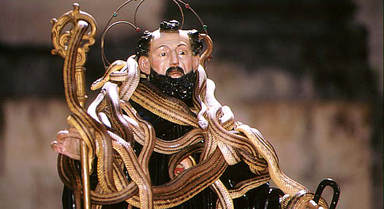 On the day of the festival, pilgrims gather in the church of San Domenico to be healed. After Mass, the statue of the Saint is draped with live snakes and carried into the piazza where believers gather to touch both the Saint and the snakes for their healing powers. The local separi also drape themselves with snakes and follow the procession. In years past, the snakes were killed afterwards and eaten in a feast, but now the bread is substituted, formed into various snake shapes... interlocking rings of snakes, biting their tails, or as serpents with sliced almond scales and coffee bean eyes. The snakes are no longer killed, but released back into the wild when the festival is over.  Some other scholars argue that the festival dates back even further to the Greek hero and god, Hercules. Supposedly, jealous Hera sent two snakes to kill him in his crib. The infant Hercules was unusually strong and fearless and strangled the snakes before they could strangle him. In the nearby hamlet of Casale votive bronzes representing Hercules have been found. Saint Domenico himself is particularly revered in Cocullo because some personal relics are kept in the church there: a molar and a horseshoe from his mule. Villalag0 also has one of his molars. There is no telling who has the rest of his teeth. Perhaps they were eaten--by snakes. --GVI  In the United States, May Day isn't really a holiday at all. All we know about it is when people with roots from Germanic countries celebrate the return of summer with children dancing around the ribboned May Pole. We also know it as a day of marches for left-wing or worker political parties promoting their agendas for various worker's rights, similar to how workers in many countries treat May Day. In Italy, the 1st of May is called Festa dei Lavoratori (Workers' Day), similar to American's Memorial Day or Labor Day. While there might still be workers marching and holding protests depending on which way the the political and economic wind is blowing, for most workaday furbo Italians, it's simply a day off from work and a long weekend to go to the beach, attend one of the many rock concerts, have a barbecue or rent a holiday cabin in the mountains. After all, it's a lot of work to organize and protest on hot city streets, isn't it? Easier to just go to the beach and throw some steaks on the grill. Most museums are closed as well as many other shops for the entire holiday weekend. This is perhaps not the best weekend to visit major tourist destinations in Italy simply because this is one of the holiday weekends where Italians do the tourist thing... just the way Americans might visit tourist sites in the States during Memorial Day or Labor Day weekends.  Red flag raised on maypole at Appignano del Tronto Red flag raised on maypole at Appignano del Tronto Still, in some parts of Italy (southern Marche, for example) a red flag is placed at the top of a poplar tree as a Socialist party symbol. If you're overly anti-communist, don't get paranoid... Italian socialists--and communists--mix well with other Italians and tourists alike. You might meet them later on during the weekend at the beach... Have a great May Day! --Jerry Finzi  Every year around this time, the town of Altamura in the Alta Murgia region of Puglia settles down to bed in the 21st century and awakes the next morning in the Middle Ages. The Federicus Medieval Festival is a historical re-enactment dedicated to Frederick II of Swabia who stopped in Puglia during his return journey after the Crusades. In 1232 Frederick II decided to have a cathedral built, around which the town center developed. Held this year from April 28th through May 1st, the festival consists of an historical parade with jugglers, jesters, street performers, flag bearers, and of course, medieval ladies and gentlemen, ancient music and of course, food. Frederick II was heading towards Bari to sail to the Holy Land, and needed to leave some of his soldiers suffering from malaria in Altamura. Miraculously, they were healed. To celebrate the miraculous recovery, the Emperor had a cathedral built in 1232. Opposing this legend, what the Emperor really wanted was to build a church to obtain the benevolence of Pope Gregory IX (who had previously excommunicated him) in a city with a strategic position within the Pope's beloved Apulia. When visiting Altamura, don't forget to sample their amazing Pane di Altamura, a wonderful, tasty bread that can stay fresh for up to a month! For more info: Federicus Festival  Typically, there are no Easter egg hunts in Italy, but nowadays you will find Il Coniglietto di Pasqua (the Easter Bunny) and hollow chocolate eggs with a surprise gift inside. There are also Pannetone and Colomba (dove shaped) breads given as presents when visiting relatives. Pasqua is the second biggest holiday, just behind Christmas. But the days leading up to Easter include solemn processions, masses, and celebrations in virtually every region of Italy, each having its own traditions. La Pasquetta, the Monday after Easter Sunday, although not a national holiday, is a public holiday throughout Italy where families stay home from work, enjoy good food and exchange gifts of chocolates.  Good Friday and the Via Crucis with the Pope On Good Friday evening, the Pope celebrates the Via Crucis (Stations of the Cross) in Rome at the Colosseum. Mimicking the Passion of the Christ, a huge cross with burning torches lights the sky as the stations of the cross are described in several languages. At the end, the Pope gives his blessing. There have been younger Popes who have carried the cross during the procession. Easter Mass at St. Peter's Square In virtually every church in Italy an Easter mass is held. The Pope himself officiates at the Easter mass at Saint Peter's Basilica in Rome. Although tickets are free, people wanting to attend the mass at St. Peters Square need to order tickets to this mass 2-6 months in advance. Florence and the Scoppio del Carro on Easter Sunday On Easter Sunday in Florence, the Scoppio del Carro (Explosion of the cart) is the event to attend. A tall, decorated cart is pulled by white oxen until it reaches the Basilica di Santa Maria del Fiore in Florence's historic center. Immediately after East Mass is completed, the Archbishop shoots a rocket into the fireworks-filled cart, creating a terrific pyrotechnics display. Afterwards there are displays with people dressed in medieval costumes. 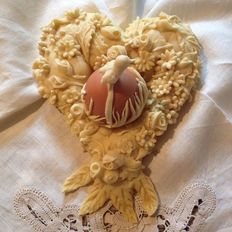 Sardinian celebration breads are amazing works of art Sardinian celebration breads are amazing works of art Sardinia's Holy Week The island of Sardinia is a part of Italy steeped in tradition and influences from other lands and cultures. Some of its Easter traditions have evolved from the Spanish Catalan, Semana Santa, such as the Riti della Settimana Santa in Alghero. The celebrations last for a week with different processions and festivities each day coming ending the final day with fireworks. If you're still in Sardinia the second Sunday after Easter, check out the Torrone (Nougat) Festival’ in Tonara--just done tell your dentist! As an example of the uniqueness of celebrations in small towns, the Umbrian hill town of Panicale, celebrates with cheese on La Pasquetta. The game of Ruzzolone is a competition with elements of bocce, bowling and even yo-yo. This game has been played for over 2000 years. The giocattori (players) attach a large, leather strap around a nine pound wheel of pecorino cheese and in yo-yo or sling-shot fashion, launch the cheese wheel through the streets that wrap around the village walls. In the piazza afterwards, there is music, dancing, wine--and of course--cheese!  Enna, in Sicily, has a series of events and processions during the entire Easter season. On Palm Sunday, the brothers put on a live scene of Jesus’ arrival to Jerusalem on the Papardura Sanctuary, clinging to the side of the mountain, with olive branches and palms gracing the path.  On Wednesday, a singing mass is held, while the members of the confraternities take over local taverns in the historic center, filling it a party atmosphere. On Holy Thursday, there is a foot washing ritual and pilgrimages that last into the night. On Good Friday, more than 2,000 friars dressed in ancient costumes walking through the streets of the city. The statue of the Holy Mary is carried by dozens to the Cathedral with the brotherhood entering the church to pay their respect to Christ. In the evening, the longest parade in Sicily starts, with all confraternities taking part, all wearing hoods of penitence and carrying torches. --GVI |
On AMAZON:
|






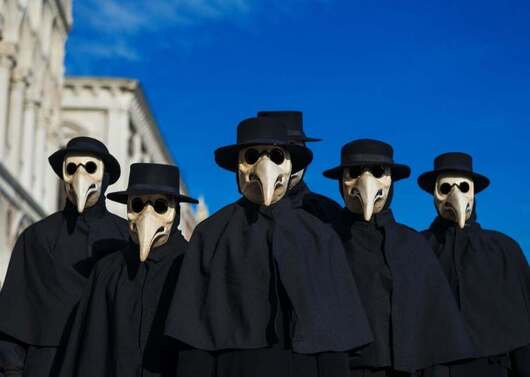




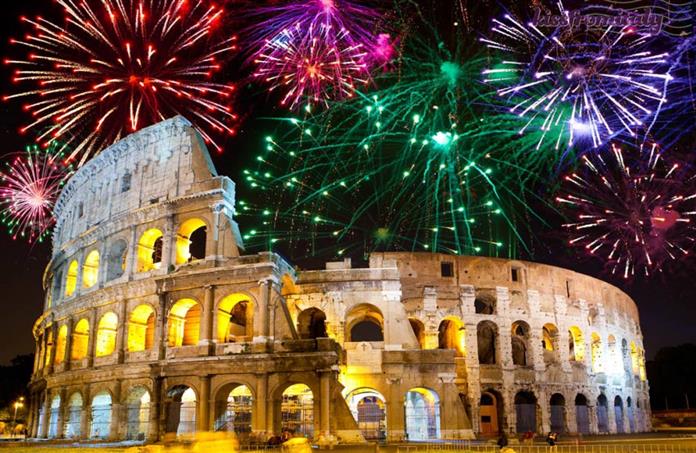

























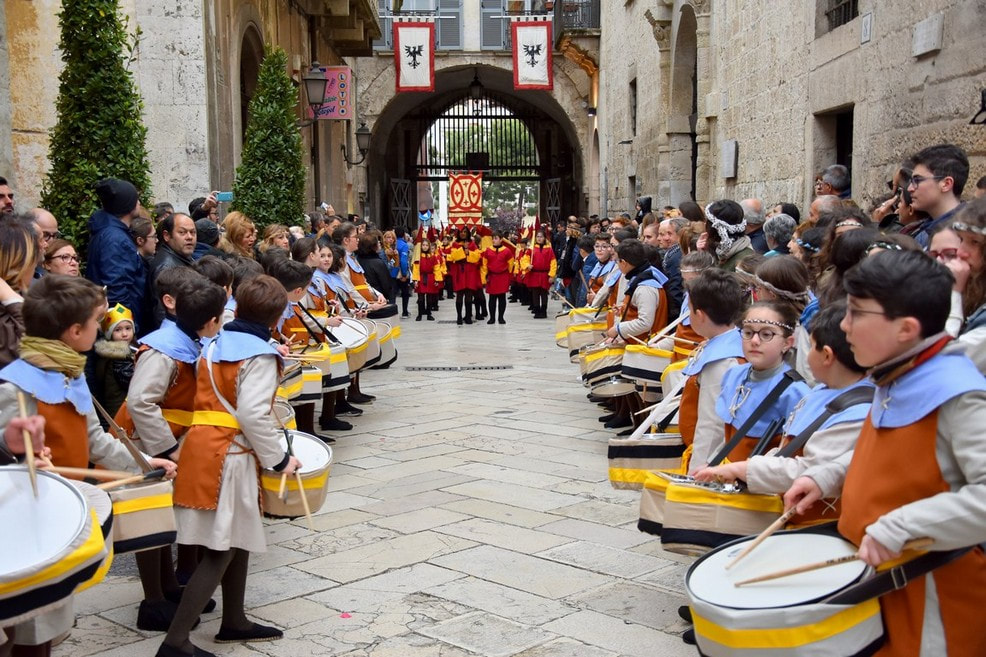















 RSS Feed
RSS Feed

